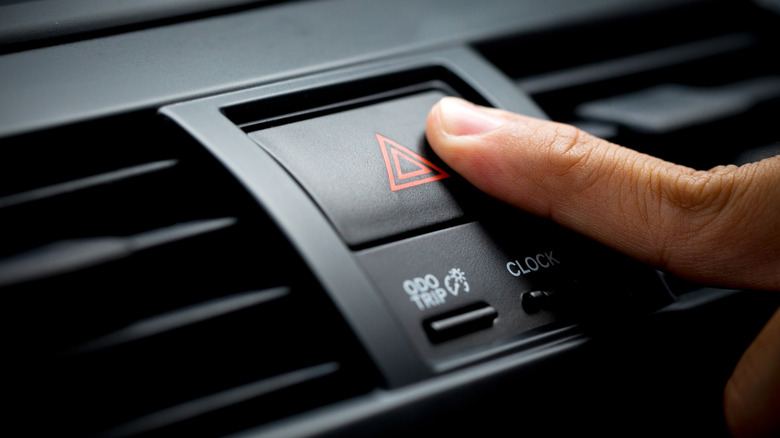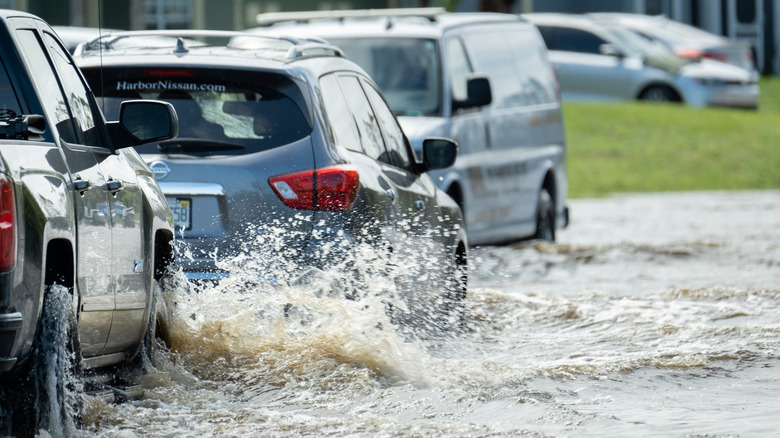This Is The Only Time It's Legal To Drive With Hazard Lights In Florida
As News 6's Steve Montiero, better known as Traffic Safety Expert Trooper Steve, puts it, "hazard lights have always meant your car has a problem, like you're stopped on the side of the road or something, maybe changing a tire." If you've broken down, for instance, you want to be super sure that any incoming motorists know very well that there's a stationery vehicle where they may not expect there to be one. Driving with hazards on, meanwhile, can be dangerous, but following a recent legal change in the Sunshine State, motorists are allowed to do just that. The important caveat, though, is that there are very strict cases in which it's permitted.
Trooper Steve explained, "the law has changed. Florida actually now allows drivers to use their hazard lights in serious inclement weather if they feel they really need to do so." It became legal to use your hazards in this fashion on July 1, 2021. The only other very niche exception, which was the case prior to this rule change and remains so, is that you can drive with those lights flashing if your vehicle is part of a procession for a funeral. As is so often the case in the United States, though, the law can differ a lot depending on where exactly in the country you're driving. The Alaska Department of Fish and Game, for instance, reports that the state has, "per mile driven ... one of the highest rates of moose-vehicle collisions in the world." As such, it reminds drivers to be sure they know how to activate the hazards in any vehicle, and to flash them when they spot a moosey hazard. It's recommended to wash your car after bad weather, but first, you've got to carefully negotiate that weather.
Sometimes it's best not to drive in rain at all
Hazard lights are supposed to indicate that there's an issue with a vehicle, but it may not be immediately obvious to fellow motorists what that issue may be. If you're driving in the rain with your hazards on, you may simply have them on for that reason, or there may be something else wrong with your vehicle unrelated to the weather. You know the answer to that yourself, of course, but the Camry behind you doesn't. All other drivers know for certain is to be somewhat wary of you, and unease on the roads can increase the chance of a mistake and a potential tragedy. In a case such as a funeral procession, drivers will hopefully have the additional context they need where your hazards are concerned, but minimizing risk is typically the way to drive regardless of the situation.
As we've seen, then, Florida drivers can now legally drive with their hazards engaged if they deem it necessary in the current weather conditions. However, this doesn't mean that it makes sense to continue driving at all if the weather is that bad. Flashing hazards will, of course, make other vehicles aware of your presence, but they won't keep your vehicle any safer from floodwater, hidden hazards, or anything else that those sorts of conditions may be concealing. As per Florida Highway Safety And Motor Vehicles, it's critical to avoid driving through such water, and it's also a legal requirement in the state to have headlights engaged whenever your wipers are active. Being aware of whether you have tires suited to driving in the rain is also important, as is a knowledge of what to do if your vehicle begins hydroplaning.

